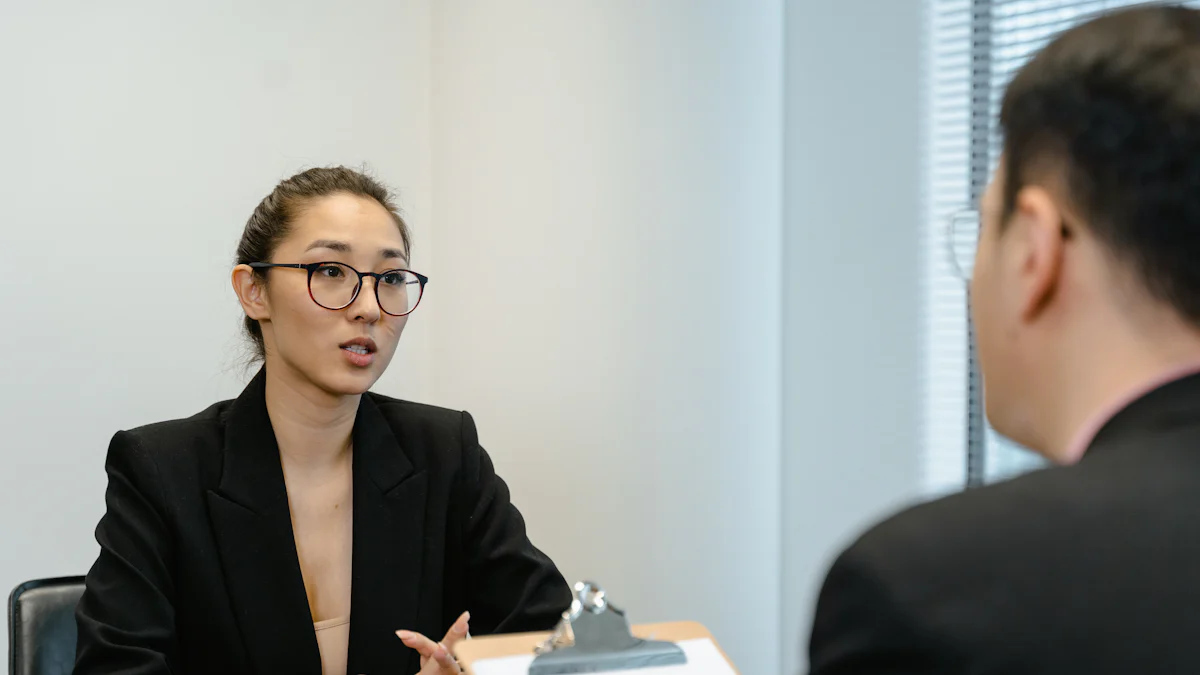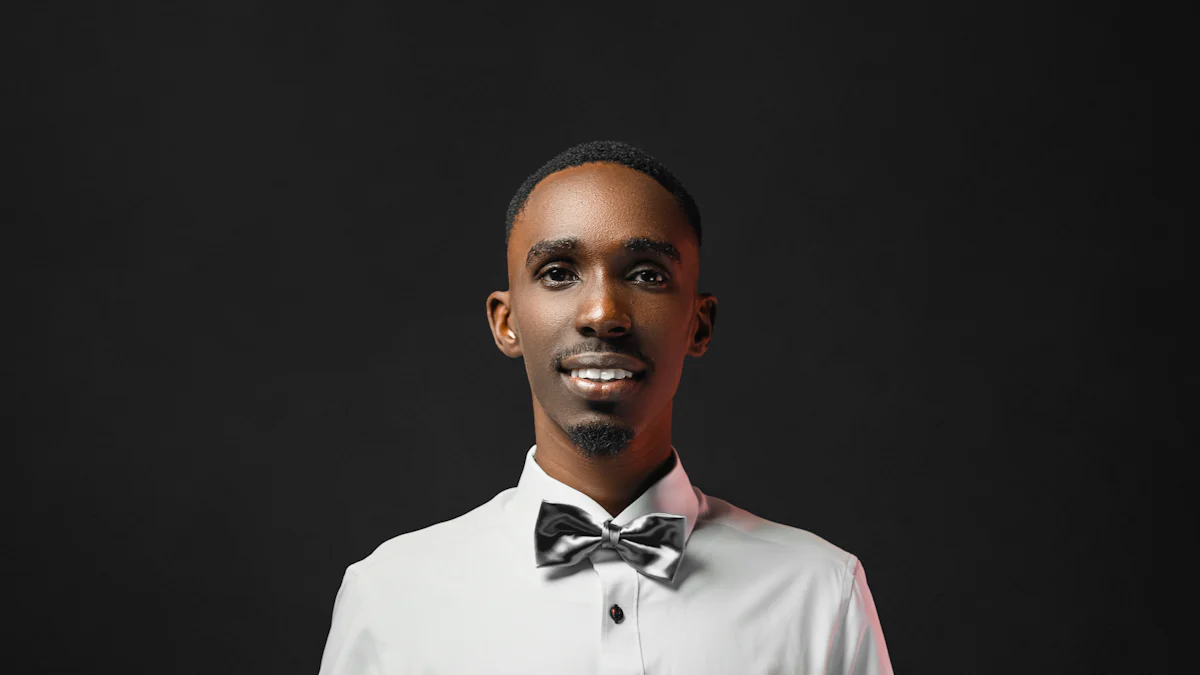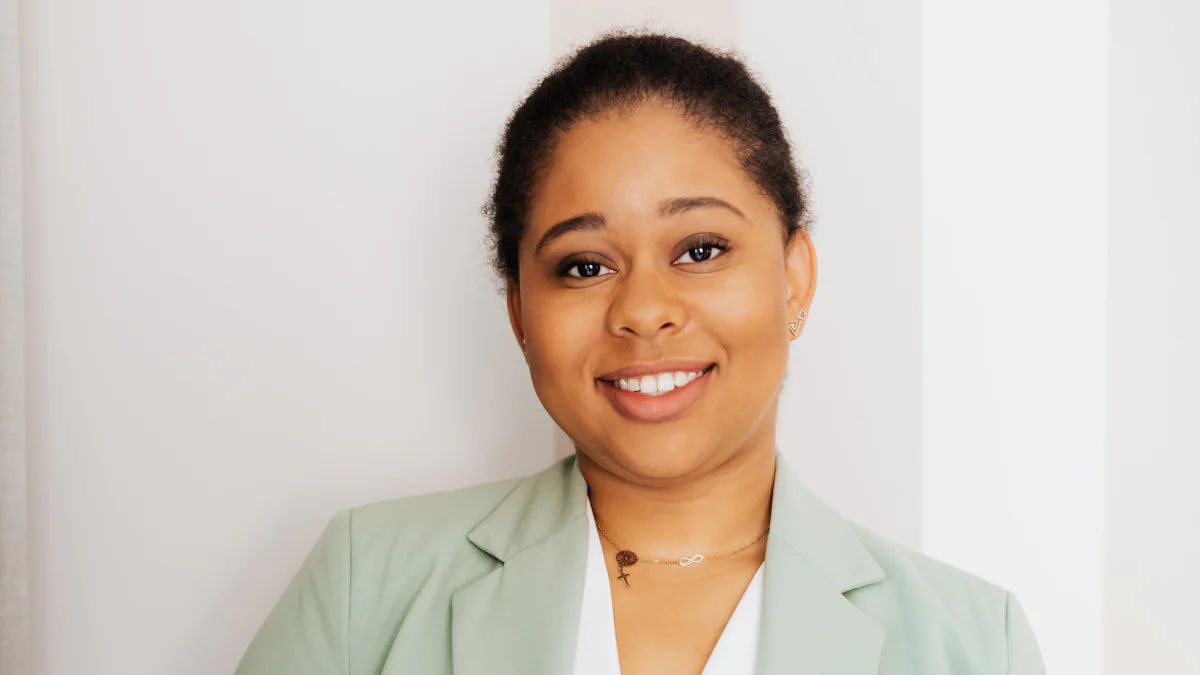Top Clothing Mistakes to Avoid in Job Interviews
Try Aihirely for
Smarter Interview Prep
Experience real-time AI support tailored to your Resume.
Boost your confidence and ace every question with
AI Mock Interview.

Image Source: pexels
First impressions matter, especially in job interviews. What you wear can shape how the interviewer sees you. If your outfit feels inappropriate, it might distract from your skills. Knowing what not to wear to an interview helps you avoid mistakes. Your clothing should reflect professionalism and boost your confidence.
Key Takeaways
-
Wear clothes slightly nicer than what the company usually wears.
-
Pick plain colors and skip bright patterns to look professional.
-
Make sure your outfit fits well and is clean to show you care.
What Not to Wear to an Interview

Image Source: pexels
Overly Casual Attire
Showing up in overly casual clothing, like jeans, hoodies, or t-shirts, can send the wrong message. It might make you seem unprepared or uninterested in the role. Even if the company has a relaxed dress code, you should aim to look polished and professional. Think of it this way: your outfit should reflect the effort you’re putting into the interview.
Tip: When in doubt, dress one level above the company’s usual attire. It’s better to be slightly overdressed than too casual.
Revealing or Inappropriate Clothing
Avoid clothing that shows too much skin or feels inappropriate for a professional setting. Low-cut tops, short skirts, or overly tight outfits can distract from your qualifications. Modesty is key here. You want the interviewer to focus on your skills, not your outfit.
Flashy or Distracting Patterns
Bright colors and bold patterns might seem fun, but they can be distracting in an interview. Instead, stick to neutral tones like navy, gray, or black. These colors project professionalism and keep the focus on what you’re saying.
Ill-Fitting Clothes
Clothes that are too tight or too loose can hurt your overall appearance. Baggy outfits might look sloppy, while tight ones can feel uncomfortable. Make sure your clothes fit well and are tailored if needed. A good fit shows attention to detail and professionalism.
Excessive Accessories or Strong Fragrances
Keep accessories minimal. Large, flashy jewelry or too many pieces can overwhelm your look. Similarly, avoid strong perfumes or colognes. A subtle scent is fine, but overpowering fragrances can be distracting or even unpleasant for the interviewer.
Outdated or Worn-Out Clothing
Wearing clothes that look old or worn out can give the impression that you don’t care about the interview. Make sure your outfit is clean, pressed, and in good condition. Small details, like polished shoes or a wrinkle-free shirt, can make a big difference.
Casual Footwear or Flip-Flops
Flip-flops or open-toed shoes are a big no for interviews. They can make you seem unprofessional and unprepared. Stick to closed-toe shoes like loafers, flats, or heels. Your footwear should match the formality of your outfit.
Headwear Without Medical or Religious Reasons
Unless it’s for medical or religious purposes, avoid wearing hats or caps to an interview. They can come across as too casual and might distract from your overall appearance.
Note: If you’re unsure about what not to wear to an interview, always err on the side of professionalism. Your outfit should enhance your confidence and leave a positive impression.
Tips for Choosing the Right Outfit

Image Source: pexels
Research the Company’s Dress Code
Before deciding on your outfit, take some time to research the company’s dress code. This step helps you align your attire with their expectations. Start by checking the company’s website or social media pages for employee photos. These often give clues about how formal or casual the workplace is. If you’re still unsure, don’t hesitate to ask the recruiter or even reach out to current employees for advice. When in doubt, aim to dress slightly more professionally than the company’s typical style. It’s always better to be a little overdressed than underdressed.
Opt for Neutral and Professional Colors
Neutral colors like navy, gray, black, or beige are your best bet for interviews. These shades project professionalism and keep the focus on you, not your outfit. Avoid bright or flashy colors that might feel distracting. If you want to add a touch of personality, consider subtle patterns or muted tones. The goal is to look polished without drawing too much attention to your clothing.
Prioritize Comfort Without Sacrificing Style
Your outfit should make you feel confident and comfortable. Choose clothes that fit well and suit your body type. Wrinkle-free, clean, and well-tailored pieces are essential. Accessories can add a personal touch, but keep them simple. A classic watch or a sleek belt works well. Avoid anything too flashy or noisy. Feeling comfortable in your outfit helps you focus on the interview instead of worrying about how you look.
Ensure Proper Fit and Tailoring
Ill-fitting clothes can ruin an otherwise great outfit. Make sure your attire fits properly—neither too tight nor too loose. If needed, visit a tailor to adjust your clothes for a perfect fit. Well-fitted clothing shows that you pay attention to detail, which is a quality many employers value.
Pay Attention to Grooming and Hygiene
Your grooming matters just as much as your outfit. Wear clean, pressed clothes and polished shoes. Brush your teeth, floss, and use mouthwash before heading to the interview. Style your hair neatly and keep your nails clean and trimmed. Avoid strong perfumes or colognes, as these can be overwhelming. These small details show that you care about presenting yourself professionally.
Test Your Outfit Before the Interview
Don’t wait until the last minute to try on your outfit. Wear it a day or two before the interview to ensure everything fits well and feels comfortable. Sit, stand, and move around to check for any issues. This test run helps you avoid surprises, like realizing your shoes are uncomfortable or your shirt wrinkles easily. Preparing in advance gives you one less thing to worry about on the big day.
Pro Tip: Your outfit should enhance your confidence and professionalism. Avoid common mistakes by focusing on what not to wear to an interview and choosing attire that aligns with the company culture.
Special Considerations
Dressing for Virtual Interviews
Virtual interviews come with their own set of challenges. You might think dressing casually is fine since you’re at home, but that’s a mistake. Always dress as if you’re heading into the office. This shows professionalism and helps you feel more confident.
Your background matters too. A cluttered or noisy space can distract the interviewer. Choose a clean, quiet area with good lighting. The focus should stay on you, not your surroundings. Test your camera setup beforehand to ensure your outfit looks polished on screen.
Tip: Avoid patterns that can appear distorted on camera, like stripes or checks. Stick to solid, neutral colors for a professional look.
Adjusting for Seasonal Weather
Seasonal changes can make dressing for interviews tricky. In summer, lightweight fabrics like cotton or linen can keep you cool while looking sharp. Avoid overly casual summer wear like shorts or sandals. For winter, layer smartly with a tailored coat or blazer. Make sure your outerwear matches your outfit.
Rain or snow? Plan ahead. Carry an umbrella and wear weather-appropriate shoes. Arriving soaked or disheveled can hurt your first impression. Always prioritize looking neat and prepared, no matter the season.
Industry-Specific Attire Guidelines
Different industries have unique expectations for interview attire. In conservative fields like finance or law, a single-breasted suit in black, navy, or gray is a safe choice. Pair it with a white dress shirt, matching tie, and polished dress shoes. Keep your hair neat and trimmed.
For creative industries, you can show a bit more personality. A business casual outfit with subtle colors or patterns works well. If jeans are common in the workplace, dress slightly up with a button-down shirt or blazer. When in doubt, ask the recruiter or research the company’s dress code. This helps you avoid guessing what not to wear to an interview.
Pro Tip: Business casual is a safe bet for most industries, but always tailor your outfit to the company culture.
Dressing appropriately for a job interview helps you make a strong first impression. Your outfit speaks volumes about your professionalism and attention to detail.
-
Professional attire shows you respect the interview process and take the opportunity seriously.
-
First impressions happen fast, and your clothing plays a big role in shaping them.
-
Well-fitted, comfortable clothing boosts your confidence and helps you focus on the conversation.
Remember, your outfit should highlight your qualifications, not distract from them. When you dress thoughtfully, you set yourself up for success.
FAQ
What should I wear if I’m unsure about the company’s dress code?
When in doubt, go for business professional. A tailored suit or blazer with neutral colors works well. It’s better to overdress than underdress.
Can I wear sneakers to a job interview?
Sneakers are usually too casual. Stick to polished dress shoes, loafers, or flats. Your footwear should match the formality of your outfit.
How do I handle last-minute wardrobe malfunctions?
Keep a backup outfit ready. Carry a small sewing kit or safety pins for emergencies. Wrinkle-release spray can also save the day.
Tip: Always test your outfit a day before the interview to avoid surprises!
